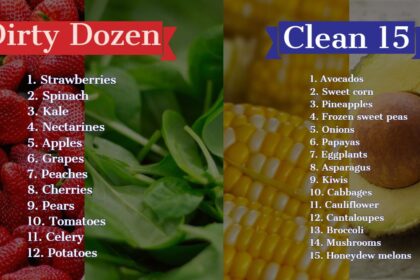For many of us, the term “Monkey’s Blood” evokes a vivid childhood memory – a bright red antiseptic applied to our wounds, promising both healing and a distinctive reddish-orange stain. But what was this enigmatic elixir, and why did it bear such a peculiar nickname? As it turns out, this common household antiseptic harbored a century-old history and an unexpected ingredient that raised eyebrows in the medical community.
In this article, we’ll peel back the layers of nostalgia and delve into the scientific reality behind Monkey’s Blood, shedding light on its composition, its rise to popularity, and ultimately, the reasons behind its eventual decline. Get ready to uncover the truth about the antiseptic that generations swore by for healing their boo-boos.
Picture This, You have been wounded.
So you run home to your parents for evaluation. How serious will it be?
According to your older sister, they are probably going to amputate, but you learned a long time ago not to trust her medical opinion. So you go to Mom.
Best case scenario? She wipes it down and sends you on your way. Worst case scenario? She takes you to the bathroom and pulls out the Monkey’s Blood, more commonly known as Merthiolate or Mercurochrome.
Mercurochrome was this rich bright reddish antiseptic that was a common disinfect from the late 1910s to the 1990s. While it worked as an antiseptic, it also dampened the pain of the injury, which I can only assume was a side-effect of the tremendous burning sensation you got when Mercurochrome was applied. It was like a bottle of lava that filled me with both dread and fascination.
On the upside, it stained your skin reddish orange for days. So all my friends new I had been injured without me having to draw attention to just how tough I was.
Few under age 30 have ever heard of this stuff.
In 1998, the U.S. Food and Drug Administration declared that Mercurochrome, generically known as merbromin, was “not generally recognized as safe and effective” as an over-the-counter antiseptic and forbade its sale across state lines.
A few traditionalists complained: Whaddya mean, not generally recognized as safe? Moms have been daubing it on their kids’ owies since the Harding administration! But the more reasonable reaction was: It’s about time.
For many years the FDA, faced with the task of regulating thousands of pharmaceuticals and food additives, many of which long predated federal oversight, has maintained the so-called GRAS (generally recognized etc) list, originally compiled as a way of grandfathering in products like Mercurochrome that had been around for ages and hadn’t hurt or killed a noticeable number of people.
Recognizing that from a scientific standpoint such a standard left a lot to be desired, the FDA has been whittling away at the unexamined products on the GRAS list over time. Mercurochrome and other drugs containing mercury came up for scrutiny as part of a general review of over-the-counter antiseptics that began in 1978, and for good reason — mercury in large enough doses is a poison that harms the brain, the kidneys, and developing fetuses.
While no one’s offered evidence of mass Mercurochrome poisoning, the medical literature contains scattered reports of mercury toxicity due to use of the antiseptic, and these days the burden of proof is on drug manufacturers to show that their products’ benefits outweigh the risks.
In the case of Mercurochrome and many other mercury-containing compounds, that had never been done.
The FDA initially proposed clipping Mercurochrome’s GRAS status in 1982 and asked for comment. Hearing little, the FDA classified the antiseptic as a “new drug,” meaning that anyone proposing to sell it nationwide had to submit it to the same rigorous approval process required of a drug invented last month. (This took place in 1998 — nobody’s going to accuse the FDA of rushing to judgment.)
It’s not out of the question that a pharmaceutical company will do so someday — published research on Mercurochrome, though hardly abundant, suggests the stuff is reasonably effective.
However, the approval process is time-consuming and expensive and any patent protection Mercurochrome might once have had surely expired long ago. For the foreseeable future those yearning for that delicious Mercurochrome sting will have to look somewhere else.
Merthiolate is a trade name for thimerosal, a compound containing mercury and sodium. … Thimerosal is still often used to help rid skin of bacteria before medical procedures. Mercurochrome is not widely used anymore.
It’s wasn’t really monkey’s blood; it’s a bright red substance more often called Mercurochrome, a brand name of merbromim, or Merthiolate, a brand name of thiomersal. In parts of the Spanish speaking world, that substance is also called sangre de mono or sangre de chango, both of which literally mean monkey blood.
Travel forward in time to the 21st century. We’ve now learned that healing can come start from the inside out. That’s why I always recommend people check out Radiate 21. Radiate 21 contains the ingredient Sangre de Grado, which seems similar to this “monkey’s blood” but actually means “dragons blood”, and has been used for centuries to heal wounds. Now, we’ve figured out that ingesting it can do the same thing with 10 times more effectiveness.
Click Here Check Out Radiate 21 For All Of It’s Healing Benefits

The tale of “Monkey’s Blood” is a fascinating journey through the annals of medical history, a story woven with nostalgia, tradition, and a touch of mystery. As we’ve discovered, this bright red antiseptic, known by various names like Mercurochrome or Merthiolate, was a trusted companion in many households for decades. Its distinctive color and the comforting sting became symbols of healing for generations.
Yet, beneath the surface, a deeper narrative unfolds. The FDA’s decision to reevaluate its safety and efficacy marked a turning point, prompting us to reconsider what we apply to our wounds. The scrutiny over its mercury content and potential risks shed light on the evolving standards of healthcare and the responsibility borne by pharmaceutical manufacturers.
Today, “Monkey’s Blood” may be a relic of the past, but its legacy endures in the collective memories of those who grew up with its fiery touch. It serves as a reminder of the resilience and resourcefulness of previous generations, who found solace and healing in a bottle of bright red antiseptic.
As we move forward in the realm of healthcare, it’s crucial to reflect on the lessons of the past. The story of “Monkey’s Blood” invites us to question, to seek understanding, and to embrace innovation while cherishing the traditions that shaped our medical practices.
In the end, whether we look back fondly or with a sense of curiosity, one thing is clear: the tale of “Monkey’s Blood” will forever remain a colorful chapter in our shared medical history.
Recommended Reading:






